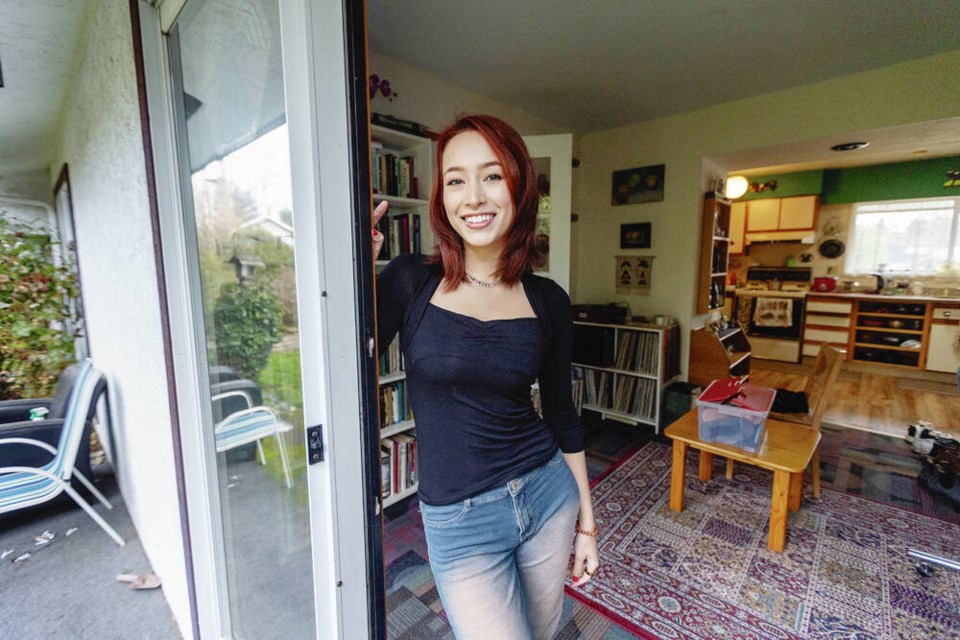Ann Makosinski was 15 and in Grade 12 when she came up with a flashlight that could be powered by the heat of a person’s hand.
Her invention won her first place in international science fairs and inclusion in Time and Forbes magazine’s 30 under 30 lists, and she was declared the 2016 Young Inventor of the Year in Popular Science.
While she obtained a patent for her invention in 2020, chances of finding the innovative flashlight on store shelves anytime soon are slim
“The flashlight was really just a proof of concept — a prototype that demonstrated the viability of a theory,” said the 25-year-old from her Saanich home. “It was a design for a science fair. I never expected it to take off — and all of the attention that was suddenly thrust upon me.”
While the concept was valid, the voltage produced using just the heat of a human hand is very low — too low for a flashlight in its current form.
“It’s really a dim light, more of a reading light, really,” said Makosinski, , who is back in Victoria finishing her bachelor’s degree at the University of Victoria.
The flashlight would have been viable if a battery was included, said some manufacturers, but she pushed back on that idea, as it would have undermined her concept of simplicity and low cost.
Her hollow device relies on what is known as the thermoelectric effect — where a thermocouple converts temperature differences into electric voltage.
To produce more electric power for a brighter light, the flashlight would need a greater difference between hot and cold — but that’s difficult to achieve just using the heat of a human hand and the temperature around it.
The technology has been applied more successfully in a line of “green” children’s toys she was part of, with items that glowed when touched by children’s hands.
“What I really need is a partner who is willing to put money into research to refine the concept. But all the people I have met just want to manufacture the product. It has been a long and messy learning experience,” said Makosinski.
“I met many businessmen who never had good intentions. Some wanted me to sign horrific deals. Others dragged their feet, making me wait a whole year. They saw a naive teenager and tried to take advantage of me. I realized quite late that I had made some not wise decisions.”
People labelled her a budding scientist, which led to an offer of an engineering scholarship.
But she turned the offer down.
“I did what I tend to do when I am pressured — I run in the opposite direction,” said Makosinski, who is majoring in English with a film studies minor.
“I will be eternally grateful for the journey my invention has taken me, but school was [and is] a priority for me. I really love arts and I want to dispel the notion that people who like science don’t like art. I am a more open picture. You can call me a Renaissance person, multi-faceted or multi-hyphenated — but don’t pigeonhole me.”
In the decade since the flashlight debut, she spent two years at the University of British Columbia, travelled to speak at numerous gigs, took an intense six-week acting class, developed a series of children’s toys, was the face of Maybelline, was part of podcasts and YouTube videos, was a guest on television talk shows and became a global brand ambassador for a Japanese casual-wear company.
She is writing a book titled The Inventing Mindset, set to be published next year.
Using her journey as the inspiration, the book will look beyond the popular conception of a scientist as a man in a white lab coat.
“I passionately believe that artists and scientists — together — can change the future,” she said. “I hope to be able to educate, entertain and inspire others to pursue their own passion.”
She graduates this June and, apart from working on her book, she has co-written, produced and hosted a YouTube series that is set to launch in the near future. She wouldn’t reveal the specific topic, but said it’s inspirational.
Her words of advice for other budding inventors and entrepreneurs? “Find yourself a good lawyer before signing anything.”
>>> To comment on this article, write a letter to the editor: [email protected]



